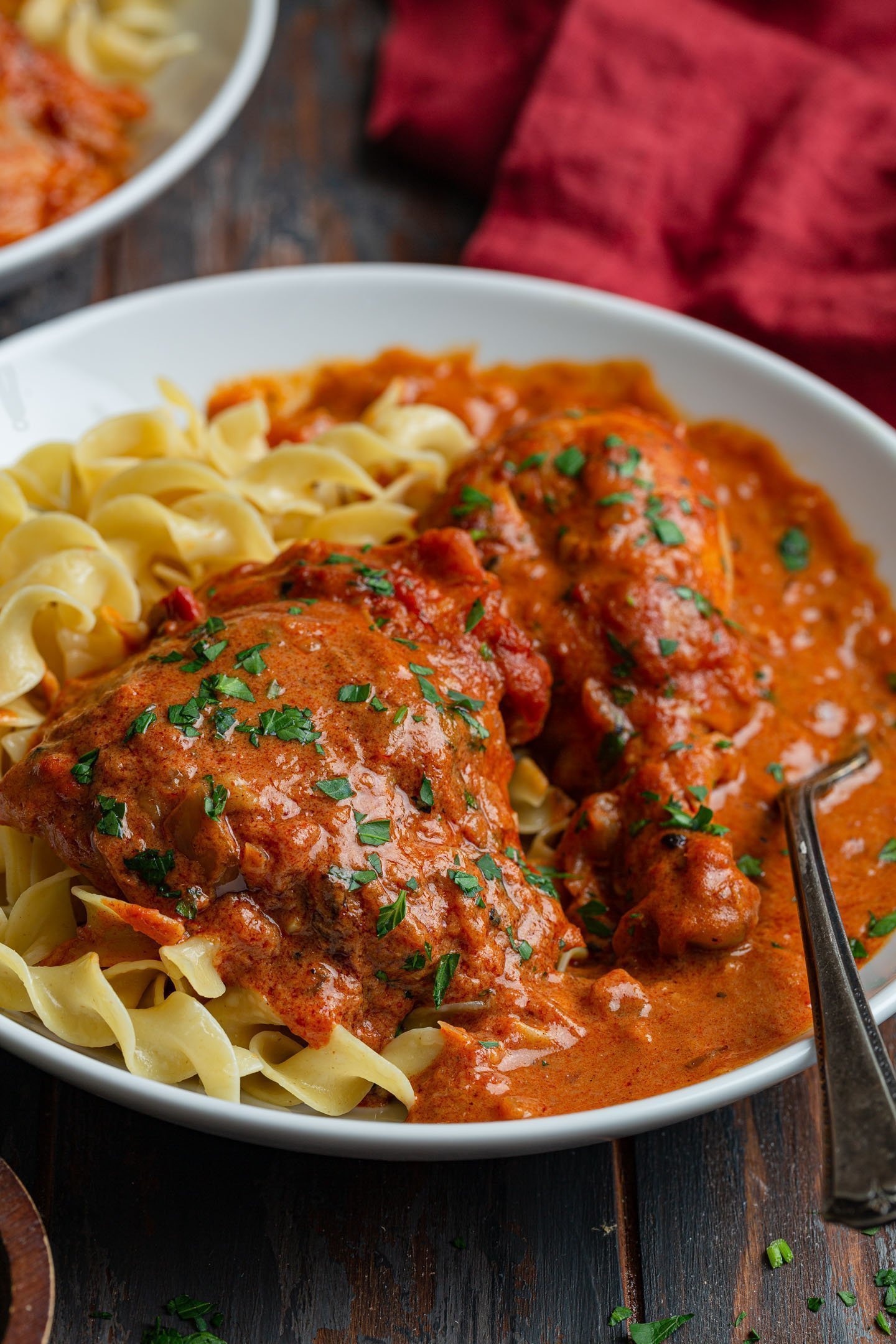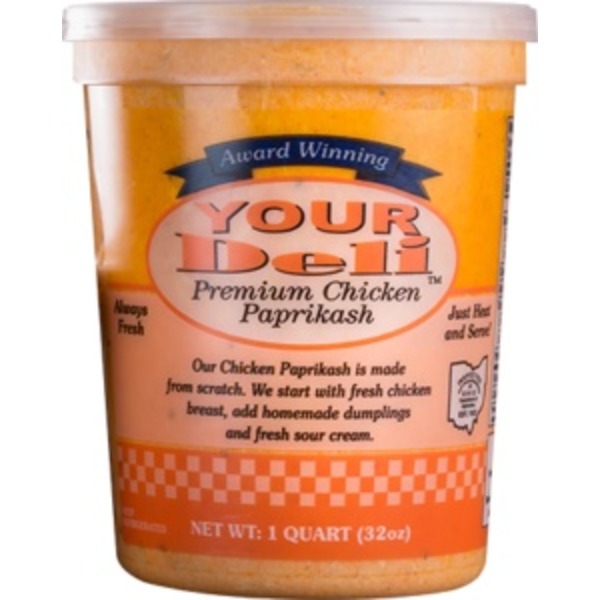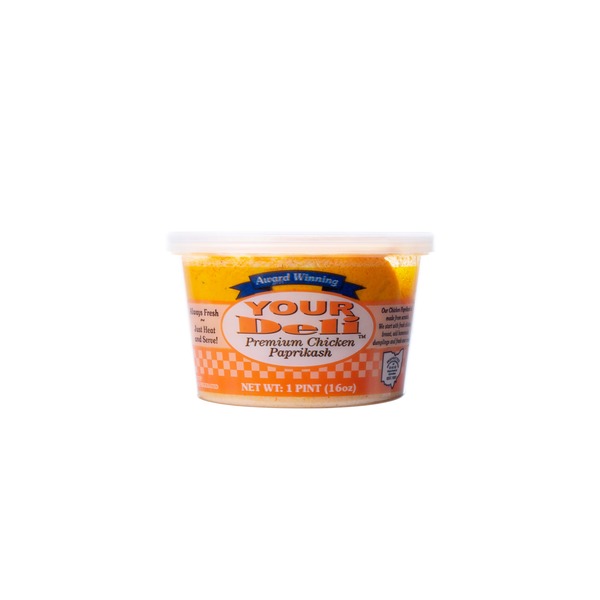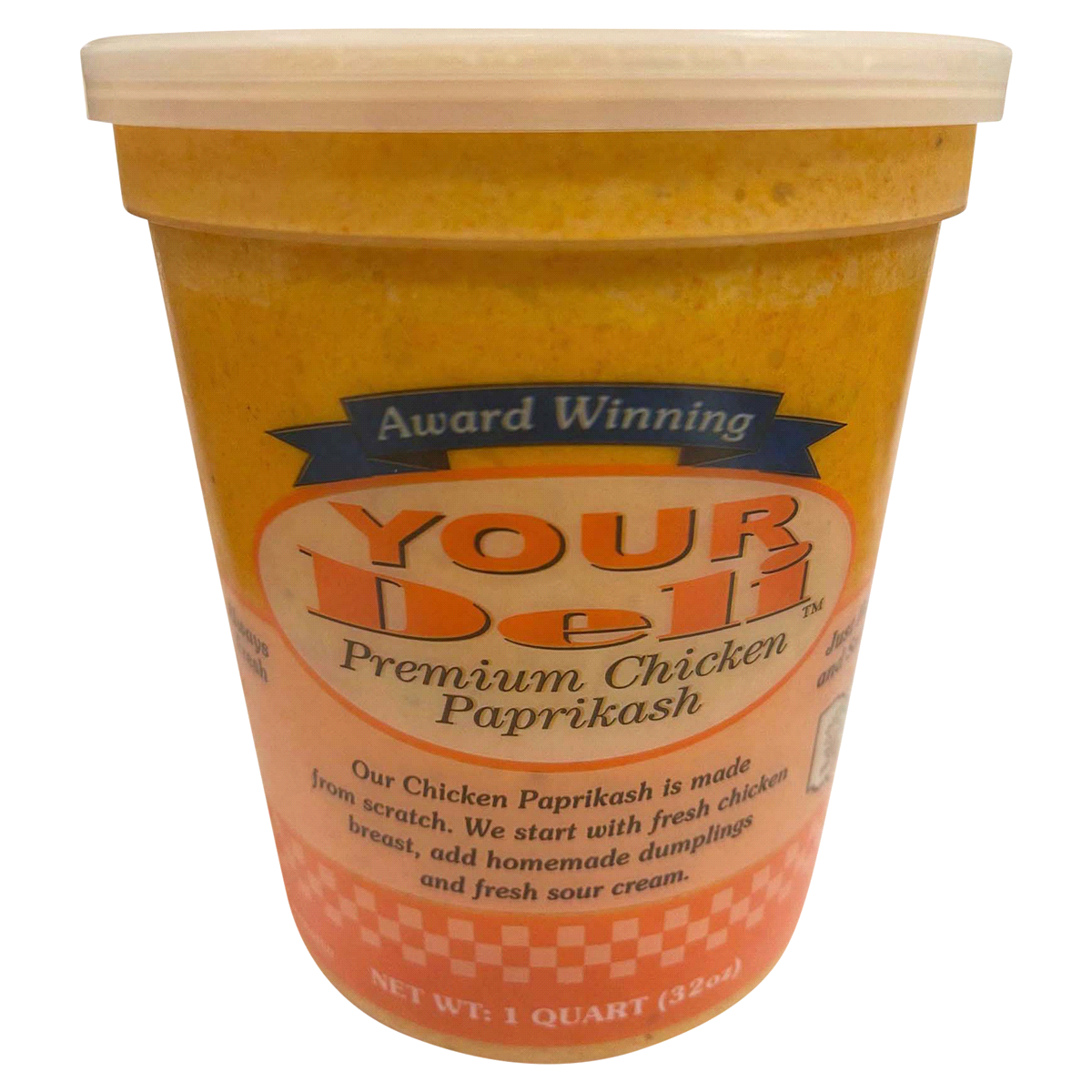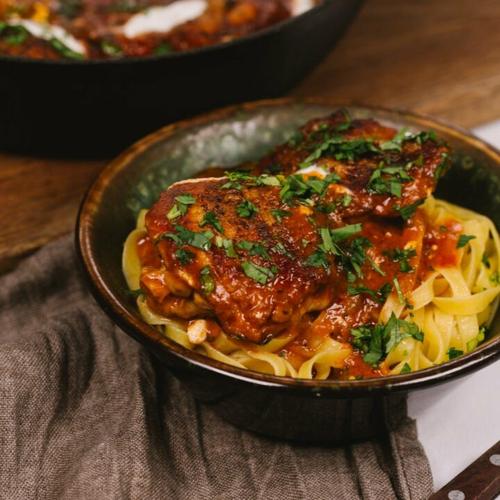Chicken Paprikash
Chicken Paprikash is an inviting, homey dish laden with origins from Central Europe, particularly Hungary. The star of the recipe, chicken, is rendered succulent in an aromatic mixture of onions and abundant paprika - giving it its characteristic, crimson hue and warm, smoky flavor.
This hearty dish is served traditionally with egg noodles, dumplings, or rice. A plate of Chicken Paprikash is a comforting midweek meal or an impressive dish for guests, mingling the flavors of the rustic countryside with the ease of modern cooking.
12%
CARBS
32%
FAT
56%
PROTEIN
Featured Articles
5 Chicken Paprikash Products
15 Recipes for Chicken Paprikash
Chicken Paprikash FAQ
What is Chicken Paprikash?
What ingredients do I need to make Chicken Paprikash?
Can I use boneless chicken for this recipe?
Can I substitute sour cream with another ingredient?
How do I prevent the sour cream from curdling when I add it to the sauce?
What is the best type of paprika to use for Chicken Paprikash?
How can I thicken the sauce if it is too thin?
How do I store leftover Chicken Paprikash?
Expiration & Storage Tips
When does Chicken Paprikash expire?
Chicken Paprikash is a delicious homemade dish that typically has a fridge life of 3-4 days when stored properly. If you decide to freeze this dish, it can safely be eaten up to 3-4 months later, although the quality of the food may begin to degrade after 2 months. Be sure to take note of when the dish was made to help keep track of its freshness over time!
How do you tell if Chicken Paprikash is bad?
Determining whether your Chicken Paprikash has gone bad might sound a bit daunting, especially if you're new to cooking. However, there are a few signs you can check for. Firstly, smell the dish. If it has an off-putting or sour odor, it's likely gone bad. Count on your eyes too! If you can spot any mold or if the sauce looks watery or has changed color, these are also indications that the dish has spoiled. Additionally, if you keep it in the fridge for more than 5 days, it's safer to discard it anyways.
Tips for storing Chicken Paprikash to extend shelf life
• Store your Chicken Paprikash in an airtight container before placing it in the fridge or freezer. This prevents it from absorbing odors from other foods and helps to maintain its fresh taste.
• If you're freezing the Paprikash, try to remove as much air as possible from the container before sealing. This will prevent ice crystals from forming and will reduce the chance of freezer burn.
• Always allow the dish to cool down before storing it in the fridge or freezer. However, don't leave it out at room temperature for more than 2 hours after cooking. This can promote bacterial growth and can make the food unsafe to eat.
• Consider dividing the dish into smaller portions before refrigerating or freezing. This makes it easier to defrost only what you plan to eat at that time, minimizing the time the rest of it stays at room temperature.
• If frozen, it's advised to defrost the Chicken Paprikash in the fridge overnight or use the defrost setting on your microwave. Avoid defrosting it at room temperature, as this can encourage bacterial growth.
Health Info
Macros
6g
CARBS
16g
FAT
28g
PROTEIN
Allowed on these diets
LOW FAT
HIGH CALCIUM
MEDITERRANEAN
GLUTEN FREE
Contains these allergens
MILK

